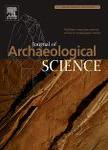版权所有:内蒙古大学图书馆 技术提供:维普资讯• 智图
内蒙古自治区呼和浩特市赛罕区大学西街235号 邮编: 010021

作者机构:Vrije Univ Amsterdam Fac Arts Res Inst Heritage & Hist Cultural Landscape & Urb Amsterdam Netherlands Salzburg Univ Dept Geog & Geol A-5020 Salzburg Austria W Univ Timisoara Dept Geog Timisoara Romania
出 版 物:《JOURNAL OF ARCHAEOLOGICAL SCIENCE》 (考古学杂志)
年 卷 期:2012年第39卷第3期
页 面:698-703页
核心收录:
学科分类:0303[法学-社会学] 0601[历史学-考古学] 06[历史学] 07[理学] 0708[理学-地球物理学] 0712[理学-科学技术史(分学科,可授理学、工学、农学、医学学位)]
基 金:NWO, The Netherlands Organisation for Scientific Research Austrian Science Fund (FWF) through Stand-alone project [FWF-P20777-N15] Marie Curie European Reintegration Grant within the 7th EC Framework Programme [FP7-PEOPLE-ERG-2008-239312]
主 题:Geomorphometry Archaeological predictive modelling Object-based image analysis Geomorphological mapping
摘 要:In this paper we report the results of an experiment with automated landform delineation and classification from digital elevation models (DEMs) using object-based image analysis (OBIA). Archaeologists rely on accurate and detailed geomorphological maps to predict and interpret the location of archaeological sites. However, they have been using high-resolution DEMs primarily for visual interpretation and expert-judgement classification of landform. OBIA can perform these classifications much faster and in a more objective fashion. The method was tested on a study area in the south east of the Netherlands. It is concluded that OBIA is a suitable technique for quick and objective delineation of landform, but needs an improved conceptual framework adapted to the local situation and archaeological questions to better identify and interpret the derived landform objects. (C) 2011 Elsevier Ltd. All rights reserved.